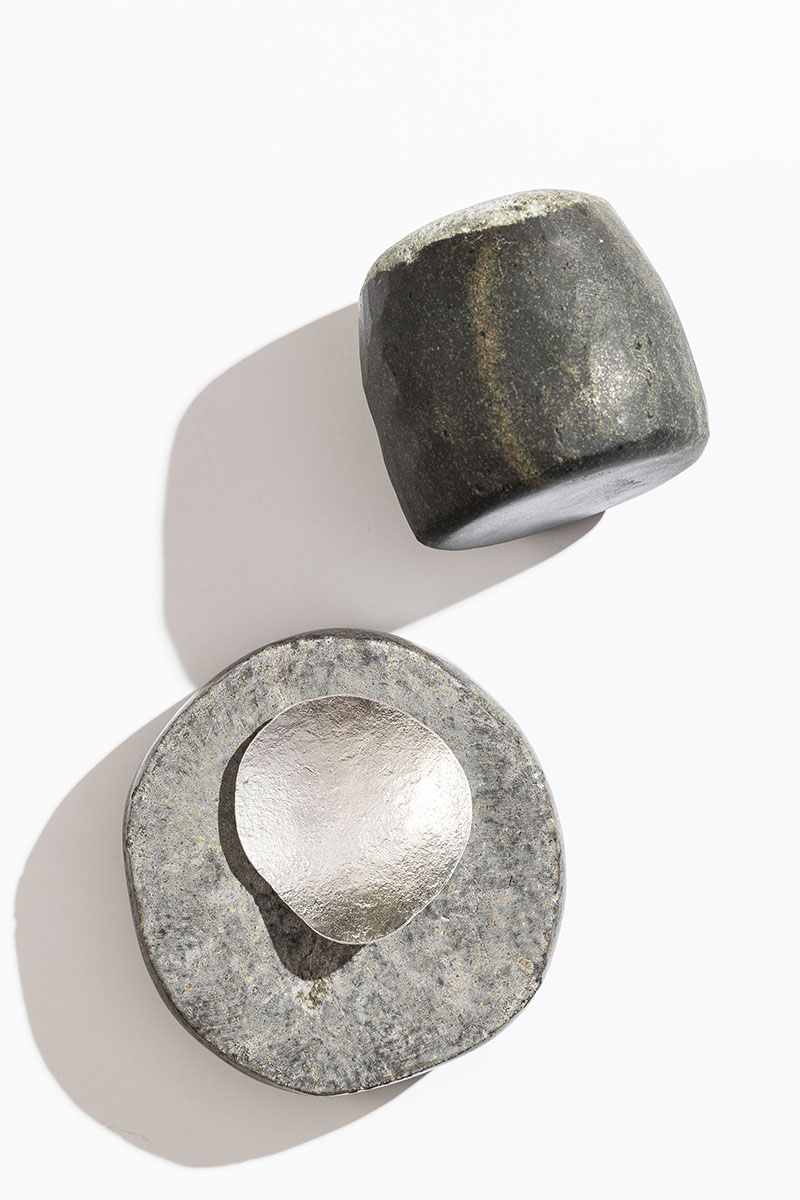16.06.2025. Medellín
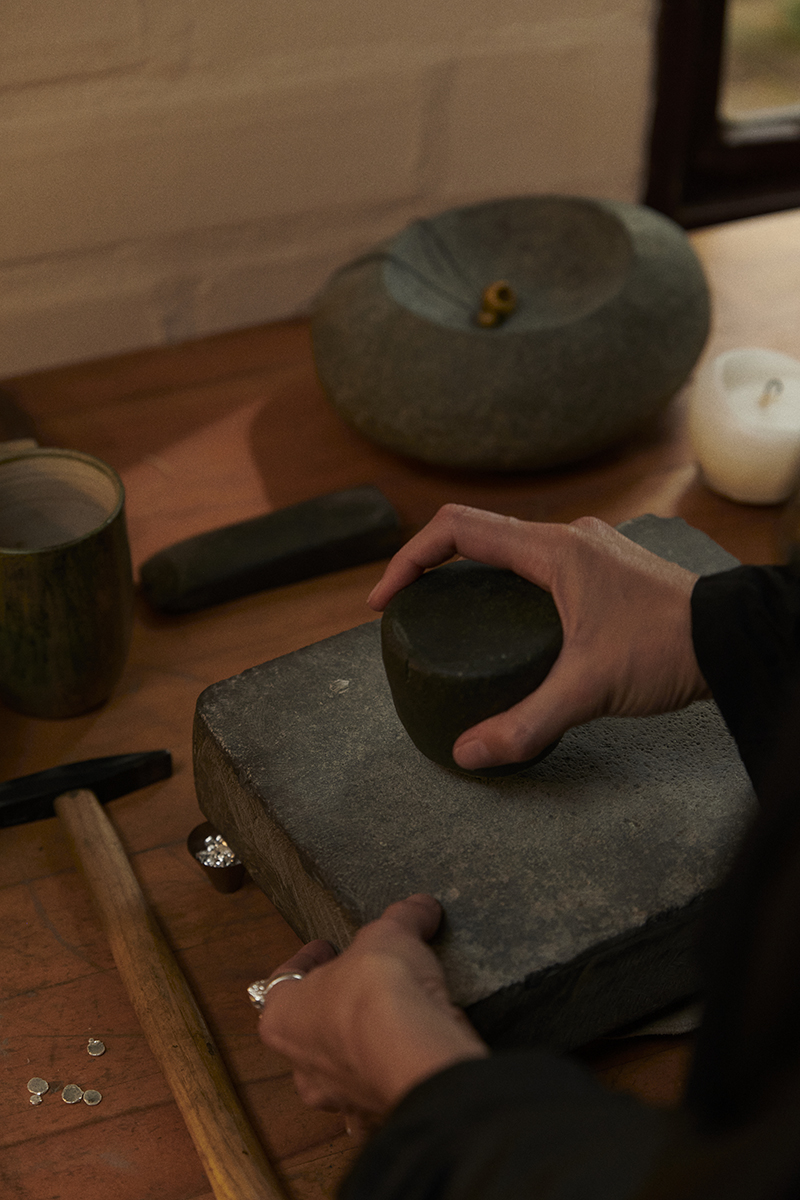
«Taller sin Borde es una extensión de mí, el lugar donde más puedo ser», dice Ana María Jiménez. Y esa afirmación no es solo una declaración personal, sino también una manera de entender su práctica: sin bordes, sin límites impuestos por el oficio, la disciplina o el formato. Formada como arquitecta, su recorrido la ha llevado a moverse con libertad entre la joyería, el arte y la investigación, tejiendo un lenguaje propio donde el cuerpo, el espacio y el objeto se relacionan de manera orgánica.
“Taller sin Borde is an extension of myself, the place where I can be the most,” says Ana María Jiménez. This statement is not only personal—it also reflects her entire practice: one without borders, without the limits imposed by disciplines, formats, or predefined roles. Trained as an architect, her path has taken her fluidly between jewelry, art, and research, weaving together a unique language where body, space, and object relate organically.

Para Ana María, la creación no parte de una categoría fija. Su interés está en lo que sucede entre: cuerpos, materiales, historias. Esa noción del “entrecuerpo” atraviesa su trabajo y da lugar a una práctica que no busca definirse, sino más bien abrirse. Taller sin Borde, nace como un espacio de experimentación en el que se cruzan lo sensible, lo técnico y lo intuitivo.
For Ana María, creation does not begin from a fixed category. Her interest lies in what happens in between: between bodies, between materials, between stories. This notion of the “entrecuerpo” (the space between bodies) runs through her work and shapes a practice that seeks not definition, but openness. Taller sin Borde emerged as a space of experimentation where the sensitive, the technical, and the intuitive intersect.
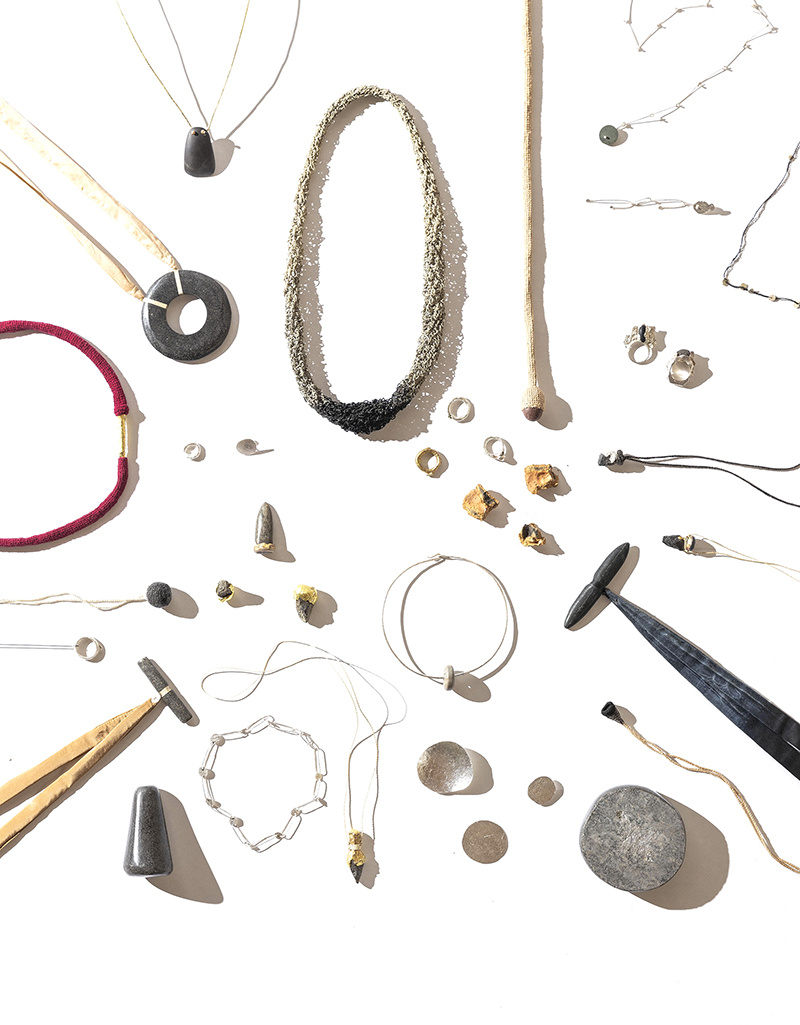
En sus piezas, Ana María activa una conexión con lo ancestral, en especial con el mundo precolombino. Su aproximación no es meramente formal: investiga desde la materia, reconstruyendo técnicas y rituales a través del cuerpo. En colaboración con un equipo interdisciplinar, ha explorado el papel del fuego como elemento central en procesos de fundición, sin recurrir a herramientas industriales. El fuego, en su taller, se enciende como ritual, y el cuerpo se vuelve canal para que esa transformación ocurra.
In her pieces, Ana María activates a connection with the ancestral, particularly the pre-Columbian world. Her approach is far from superficial: she investigates through matter, reconstructing techniques and rituals by way of the body. In collaboration with an interdisciplinary team, she has explored the role of fire as a central element in metal casting—without the use of industrial tools. In her workshop, fire becomes a ritual, and the body a channel through which transformation occurs.
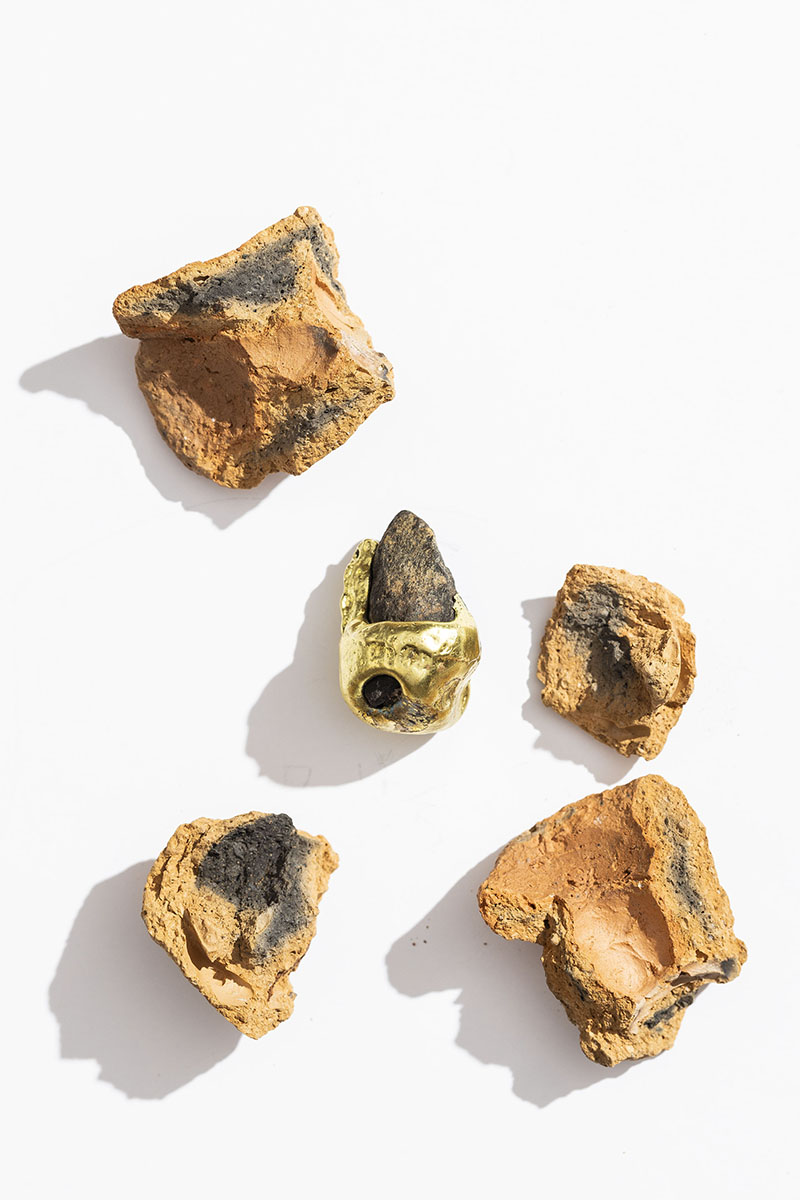
El oficio, para ella, es también una forma de escucha. “El oficio toma tiempo en llegar al cuerpo”, dice. No hay afán. Su trabajo parte de una atención profunda al material, a la historia y a la intuición. Investiga desde la experiencia: tocar, ensayar, fallar, repetir. Esa lentitud le va dando vida a lo que crea.
For her, craftsmanship is also a form of listening. “Craft takes time to arrive in the body,” she says. There is no rush. Her work is grounded in deep attention to material, to history, and to intuition. She researches through experience: touching, testing, failing, repeating. That slow rhythm breathes life into what she creates.
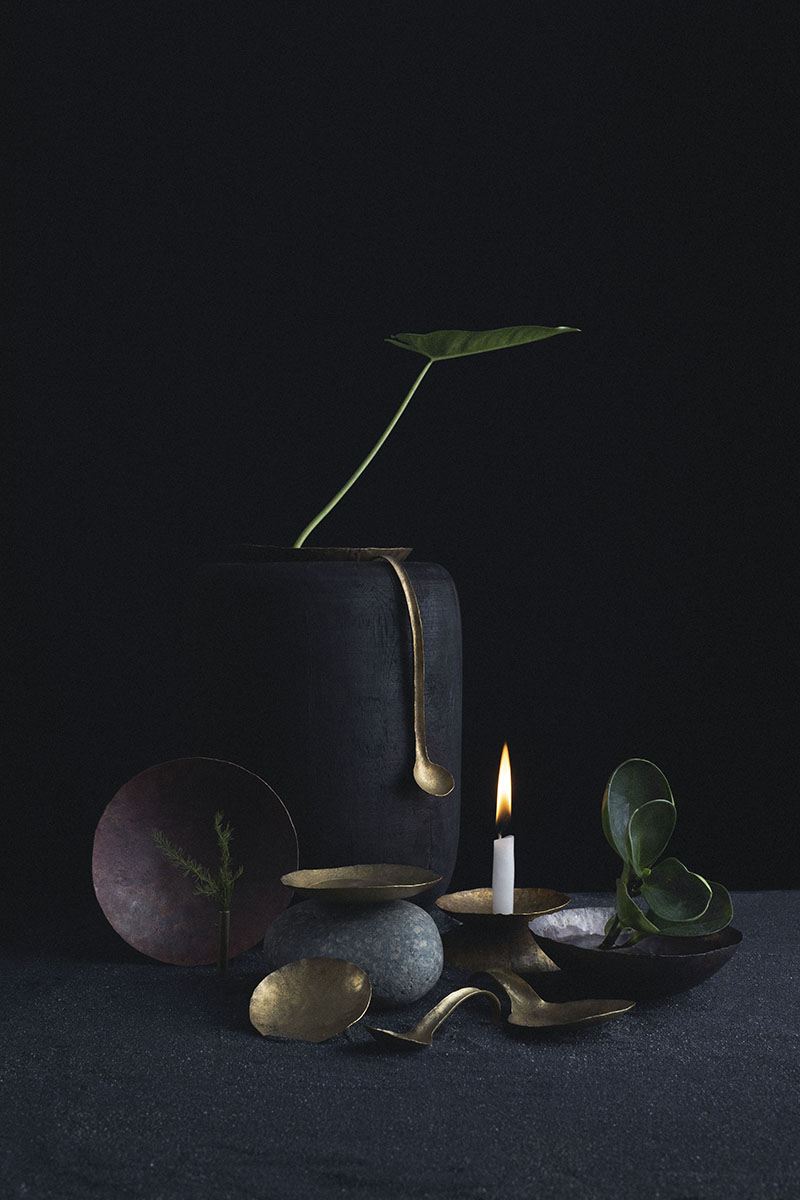
Taller sin Borde no pretende responder a una sola lógica. Es un lugar que se habita desde el hacer, desde el pensamiento en movimiento. Un espacio donde los bordes se suavizan para dar lugar a nuevas formas de presencia.
Taller sin Borde does not seek to follow a single logic. It is a place lived through making, through thinking in motion. A space where boundaries soften, allowing new forms of presence to emerge.
